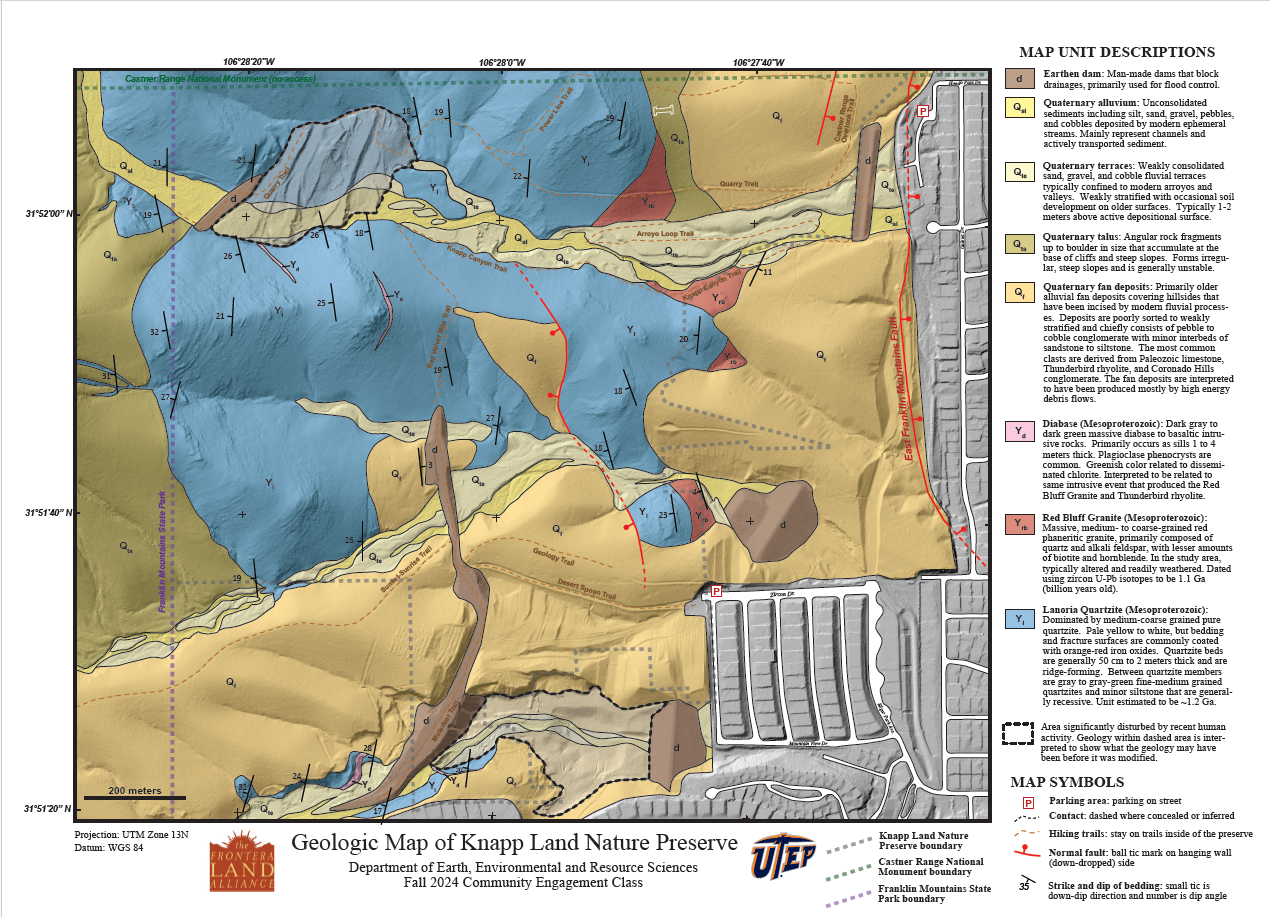Knapp Land Conservation Easement
Ever wonder what the type of rock you see when on the trails at Knapp Land Nature Preserve?
Now you can with this great geology map created by the Earth, Environmental and Resource Sciences Department at The University of Texas at El Paso!
The Knapp Land’s preservation started with an area organization called Franklin Mountains Wilderness Coalition.
They created a sub-committee Save Our Sierra’s whose sole focus was to see this land not developed. After the public objected to the sale of this private land for development, the City purchased the property in early 2018 with Quality-of-Life “Open Space” voter-approved bond money plus supplements from the El Paso Water Stormwater Fund. The public still did not believe that was enough protection for the land. So, they rallied again and asked the City of El Paso to place a conservation easement on the land. June 11th, 2020, the El Paso City Council unanimously approved that the City work with The Frontera Land Alliance to negotiate a conservation easement.
Photo by Judy Ackerman
The Knapp Land is located in the Trans-Pecos region of West Texas in the northern portion of the Chihuahuan Desert. The 353 acres are fully a part of the Franklin Mountains, a tilted fault-block mountain range composed of mainly sedimentary rock with some igneous intrusions. The flora and fauna on the Knapp Land are representative of species found in similar elevations and substrates throughout the Franklin Mountains. Creosote bush, sotol, prickly pear, and lechuguilla are among the most widespread plants on the land. The canyon slopes harbor scrub oaks and acacias. Within the flow paths are communities dominated by desert willow and Apache plume. Characteristic species of insects include desert tarantula, millipedes, several species of beetles, native bees and wasps, grasshoppers, and butterflies. Evidence of mammals on the Knapp Land includes coyotes, gray foxes, rabbit species, and mule deer. Bobcats and mountain lions have been reported in similar habitats in other parts of the Franklins, so it is likely this property is utilized as a part of their territories. Small mammals such as rock squirrels, gophers, and native mice are probably present but have not been seen during recent surveys. There are many birds found in the Franklins and a good number have been sighted on the Knapp Land. These include mourning dove, white-winged dove, Gambel’s quail, scaled quail, greater roadrunner, western kingbird, Say’s phoebe, house finch, black-throated sparrow, canyon towhee, cactus wren, and rock wren.
The Knapp Land landscape is a series of east/west-trending ridgelines and arroyos. Water in the arroyos flows westward, towards the Hueco Bolson. The property has a number of areas where the land has been highly modified with flood control dams and basins, a rock quarry, dirt roads, and power lines. There are also remnants of some buildings and foundations. Native and non-native vegetation is slowly reclaiming many of these disturbed areas.
These lands are key to ensuring that land alongside the FMSP remains open to allow for natural runoff during periods of heavy or “monsoon” rainfall, which in El Paso typically occurs from July through September.
Having these natural open space allows greater time and space for rainwater to be absorbed and spread out, reducing the chance of flooding downstream.
See Knapp Land Nature Preserve from your home, Tour of Knapp Land






